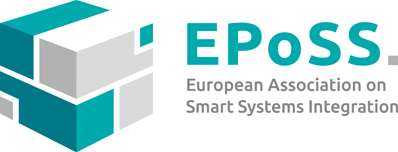
In the shaping of the next European Framework Programme for Research and Innovation (FP10), the undersigned 110 European associations representing key European RD&I stakeholders, hereby urge the EU Institutions to significantly increase the current budget in view of FP10 and to make pan-European collaborative research the cornerstone of FP10, answering industrial needs by excellence.
While the global technology race accelerates, the EU significantly lags behind in terms of investments in RD&I compared to its global competitors. This is in particular true for private investments. This shortfall hampers the EU's ability to fully capitalise on its scientific and technological potential. For the sake of its long-term competitiveness, the EU needs to do more to attract and retain private RD&I investments in Europe.
In this regard, the EU Framework Programme plays an important role. Public RD&I investments enabled through the EU Framework Programme are crucial to alleviate market failures and to stimulate private RD&I investments by lowering the risks that such investments represent for the industry. By pooling resources and expertise through the EU Framework Programme, Member States and the EEA countries, industry, RTOs and academia aim to tackle complex challenges collectively, accelerating the pace of technology maturation and innovation and supporting the EU positioning in today’s technology race which is currently under duress (See EU Innovation Score Board 2023).
The impact of such collective and coordinated EU RD&I investments has been recently demonstrated by the Ex-post evaluation of Horizon 2020 which found that the highest degree of financial leverage per each euro invested was achieved in European partnerships. In the institutionalised partnerships, private partners’ contributions with resources (in cash or in-kind) more than doubled or even tripled the volume of EU investments.
We call on the EU Institutions to significantly increase the current RD&I budget in view of FP10. Such collective EU RD&I investments need to be reinforced in the next EU budget (MFF). National RD&I investments should in parallel be ensured and at minimum meet the target of 3% of GDP, aiming at leveraging private RD&I investments. Committing to EU technological leadership should ensure that proper and timely investments are made.
To further support EU Competitiveness, FP10 must focus on excellent cross-border collaborative RD&I, with a strong industrial participation. To do so, the focus on competitiveness must be reinforced in Pillar II, and should similarly be a key driver for activities in Pillar I and Pillar III. Pillar II is the only truly collaborative part of the FP today, breaking silos to promote the flow of knowledge between and within the private and public sectors as well as between basic and applied research. A significant part of FP10’s total budget should not only be allocated to Pillar II, with an enhanced focus on European Industrial Competitiveness but the activities in Pillar II must also be driven by strategic EU priorities and clearly defined industrial needs.
Pillar II is crucial to:
- Build long-term trust-based public-private partnerships (PPPs) amongst a wide variety of European RD&I actors, which is an indispensable element in strengthening Europe’s RD&I ecosystems. This ensures the industry’s uptake of novel technologies and scale-up into new solutions, products and services, improving people’s well-being and quality of life, and increasing European long-term competitiveness. The FP’s current Pillar II, containing the key EU industrial partnerships, especially the co-programmed and institutionalised partnerships, supports this ambition. Therefore, Pillar II with its industrial partnerships will need to be further strengthened with an adequate budget.
- Reduce risk and uncertainty and stimulate private investment in Europe by demonstrating the EU’s support for technology-intensive sectors, while preserving technology neutrality for a level playing field on the internal market. This would give the right incentives for industry to invest in RD&I in Europe, rather than in third countries and to support the delivery of the EU green and digital transitions.
We, the undersigned associations, are ready to further discuss the design of FP10 with the EU Institutions. We are fully convinced that Europe has much better potential in the global innovation race than what it is currently performing. To remain a model of economic and social prosperity, Europe needs to strongly invest in pan-European collaborative RD&I fostering collaboration, driving technology maturation and innovation, and leveraging the expertise of RD&I public and private actors to strengthen its competitiveness and assert its leadership in key technological domains, as well as pave the way for a prosperous and sustainable future.
Download the full Joint Statement and see the list of signatories below.
Share on
